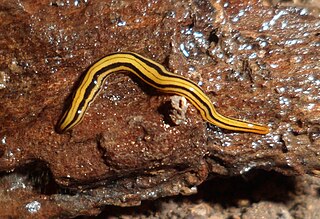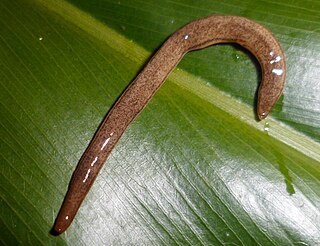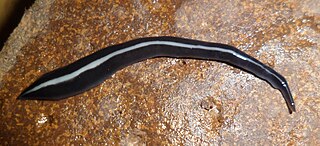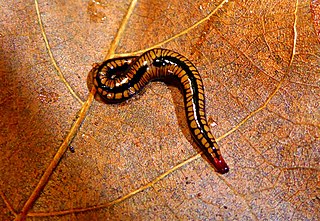
Geoplanidae is a family of flatworms known commonly as land planarians or land flatworms.

Geoplaninae is a subfamily of land planarians endemic to the Neotropical region.

Luteostriata is a genus of land planarians from Brazil characterized by a yellow body with dark longitudinal stripes.

Supramontana is a genus of land planarians from South America.
Geoplana is a genus of land planarians found in South America.

Issoca is a genus of land planarians from Brazil.

Caenoplana is a genus of land planarians from Australia and New Zealand.
Eudóxia Maria Froehlich was a Brazilian zoologist.

Amaga is a genus of land planarians from South America.

Obama nungara is a species of land planarian in the family Geoplanidae. It is native to South America, but has been introduced in Europe.
Gigantea is a genus of land planarians from the Neotropical realm.

Imbira guaiana is a species of land planarian in the subfamily Geoplaninae. It is the type species of the genus Imbira and is found in Brazil.

Paraba franciscana is a species of Brazilian land planarian in the subfamily Geoplaninae.

Othelosoma is a genus of land planarians found in Africa and India.
Liana is a genus of land planarians from South America, currently comprising a single species, Liana guasa, which occurs in Chile.

Australoplana also known as Australian flatworm is a genus of land planarians from Australia and New Zealand.
Timyma is a genus of land planarians that currently contains a single species, Timyma juliae. The species was found in Chile, but its anatomic features indicate that it is probably introduced in South America, being native from somewhere in the Pacific.
Reomkago is a genus of land planarians from Australia.

Notogynaphallia nawei is a species of land planarian from Argentina.
Claudio Gilberto Froehlich is a Brazilian zoologist.












